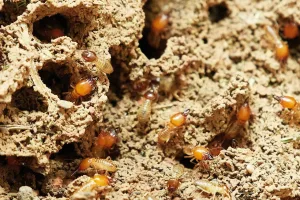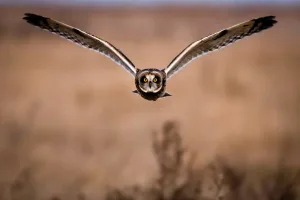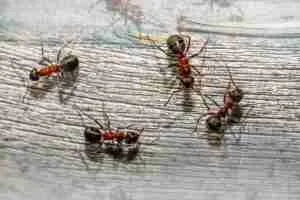26 Interesting Facts About Peacock (The Bird with the Bling)
-
The feathers of a peacock are not dyed, but reflect light through microscopic structures.
-
Male peacocks begin developing their tail feathers when they are just a year old.
-
Peacocks have a wide array of calls, including a loud scream.
-
Peafowl are great swimmers and can cross rivers if needed.
-
Male peacocks begin developing their tail feathers when they are just a year old.
-
Peafowl have an excellent memory and can recognize individual humans.
-
The peacock’s train weighs as much as its body.
-
The peacock’s call can be heard from over a mile away.
-
The eye spots on their feathers are designed to appear like eyes, fooling predators.
-
Peafowl have been depicted in art dating back over 2,000 years.
-
The largest group of peafowl ever recorded had over 1,000 individuals.
-
Peacocks can rotate their necks 180 degrees to look around.
-
Peafowl use trees to sleep at night for safety.
-
A peacock’s feather pattern can appear completely different in different light.
Table of Contents
1. They use their tail feathers to attract mates.
One of the most striking features of a peacock is its beautiful tail, also known as a train. This colorful display is actually a tool used to impress potential mates.
During mating season, peacocks fan out their tail feathers to create a stunning, eye-catching display. The larger and more colorful the train, the more likely the peacock is to attract a mate, showcasing its health and vitality.
2. They are native to South Asia.
The peacock, specifically the Indian Peafowl, is native to South Asia, particularly India and Sri Lanka. These birds thrive in tropical climates and are often seen in forests and grasslands.
While they are native to South Asia, peacocks have been introduced to many other parts of the world, including the Americas and parts of Europe, where they are now seen in parks and zoos.
3. A peacock’s tail feathers can be up to 5 feet long.
Peacocks are known for their extravagant tail feathers, which can grow as long as 5 feet. This impressive tail is made up of 150 to 200 feathers, which can take up to three years to fully develop.
When a peacock spreads its tail, it covers an area almost as wide as its body length, creating a striking visual. The tail’s feathers are not just for show; they are a vital part of their mating ritual.
4. Peahens are less colorful than peacocks
Peahens are less colorful than peacocks and have a brown and green plumage. They are smaller than peacocks and do not have the long feathers that male peafowl are known for.
Peahens are also less aggressive than peacocks and are often seen caring for their young.

5. The bright colors of the peacock come from microscopic structures.
The vibrant blues and greens of the peacock’s feathers aren’t caused by pigments, but by microscopic structures in the feathers that reflect light. This phenomenon is called structural coloration.
These tiny structures cause the feathers to reflect light in a way that produces bright, iridescent hues. The result is an extraordinary visual display that makes the peacock’s feathers stand out in the wild.
READ ALSO: 17 Fun Facts About Owls You Didn’t Know
6. They have a wide range of calls.
Peacocks are also known for their vocalizations, which they use to communicate with others. These calls can range from a loud, distinctive scream to a series of lower-pitched sounds.
The most recognizable call of a peacock is a high-pitched scream, often heard during the mating season or when they feel threatened. Their vocalizations are an essential part of their communication with others in their environment.
7. Peafowl are social birds and are often seen in groups called parties.
Peafowl are social birds and are often seen in groups called parties. Parties can consist of both males and females and can range in size from a few birds to more than 20.
Peafowl communicates with each other using a range of vocalizations and body language.
8. Peafowl are omnivores.
Peafowl are omnivores, meaning they eat both plants and animals. Their diet includes seeds, fruits, insects, small reptiles, and amphibians.
Their diet is varied and helps them maintain a healthy, balanced lifestyle. Peafowl are skilled foragers, and they spend a significant amount of time looking for food in the wild.

9. Peafowl are great at surviving in the wild.
Peafowl are hardy creatures, capable of surviving in a variety of environments. While they prefer forested areas, they can also adapt to other habitats, such as grasslands and agricultural areas.
In the wild, peafowl are known to be resourceful, using trees and shrubs for cover and protection from predators. Their strong, fast flight abilities also help them escape danger quickly.
10. Only the male peacock displays the colorful feathers.
It’s the male peacock that boasts the stunning, colorful feathers that most people recognize. The female, known as the peahen, has much more subdued coloring, typically brown or gray.
Peahens prefer to mate with males that have the most impressive displays, which is why the males use their tail feathers as part of their courtship rituals. The more vibrant and larger the display, the more attractive they are to the females.
READ ALSO: Fun Facts About Cougar- America’s Largest Cat
11. The male peacock’s train is made up of long, iridescent feathers that can be as long as six feet.
The male peacock’s train is made up of long, iridescent feathers that can be as long as six feet.
The feathers are not just for show – they are also used to protect the bird from predators and to help regulate its body temperature. The feathers are shed and regrown each year.
12. Peacocks shed their tail feathers once a year.
After the breeding season, peacocks shed their tail feathers and begin to grow new ones. This process typically occurs every year, with a full molt taking place.
The new feathers take time to grow and develop, often looking even more impressive than the previous year’s display. This regular molting helps ensure that the peacock always has a fresh, attractive display to present to potential mates.
13. They are an important part of cultural symbolism.
Throughout history, peacocks have held symbolic meanings in various cultures. They are often associated with beauty, immortality, and pride.
In Hinduism, the peacock is seen as a symbol of grace and the vehicle of the goddess Saraswati. Similarly, in Western cultures, peacocks represent wealth, vanity, and elegance.
14. They can live up to 20 years in the wild.
In the wild, peacocks have an average lifespan of about 15 to 20 years. This long lifespan is supported by their ability to adapt to various habitats and their impressive defense mechanisms.
In captivity, peafowl can live even longer due to the lack of natural predators and consistent food sources, with some peacocks reaching up to 25 years of age.
READ ALSO: 24 Beautiful Facts About Butterflies You Didn’t Know
15. Peafowl have been domesticated for centuries.
Peafowl were domesticated in ancient times, with evidence suggesting they were kept by humans as early as 3000 BCE. They were originally domesticated for their beauty and symbolic significance.
Today, domesticated peafowl are often found in gardens, zoos, and parks around the world, continuing to serve as living symbols of elegance and grandeur.
16. They can fly short distances.
Although they are not known for their long-distance flight, peacocks can take short flights to escape predators or reach high perches. Their strong legs and powerful wings allow them to fly for short bursts.
Peacocks typically fly to get away from danger or to reach the safety of a tree or high platform. While they prefer to stay on the ground, their flight ability provides them with an additional defense mechanism.

17. Peafowl have unique “dance” rituals.
Peafowl don’t just rely on their stunning feathers for mating; they also engage in dance-like movements to impress potential mates. These displays often include specific body movements, such as shaking their feathers or twisting their neck.
These dance rituals are intricate and designed to show off the peacock’s agility and beauty. Peahens choose their mates based on the quality of these movements, adding another layer to the mating ritual.
18. Peafowl are known for their ability to survive in a variety of environments.
A interesting fact about the national bird of India Peafowl is that they are known for their ability to survive in a variety of environments, including urban areas. They are often seen in gardens and parks, where they feed on insects and plants.
In some areas, they are considered pests due to their habit of feeding on crops.
19. They are symbols of good luck in some cultures.
In many cultures, peacocks are considered symbols of good fortune and prosperity. In ancient Greece, they were associated with the goddess Hera, and in many cultures, they are believed to bring blessings and success.
Even today, the image of the peacock is often used in art and decoration to symbolize beauty, good fortune, and new beginnings. It continues to hold a powerful place in cultural symbolism.
20. Peafowl have a unique courtship behavior that involves the male offering food to the female.
Peafowl have a unique courtship behavior that involves the male offering food to the female.
This behavior is thought to help build trust between the male and female and to ensure that the female is well-fed during the mating season.

21. The mating season for peafowl typically occurs between March and June.
The mating season for peafowl typically occurs between March and June, with males beginning to display their feathers in February.
During this time, males are highly territorial and will defend their space from other males.
READ ALSO: 24 Interesting Facts About Bobcats: Fierce & Fuzzy
22. Peafowl are incredibly fast runners.
Peafowl can run at speeds of up to 10 miles per hour. Their long legs and strong muscles allow them to sprint quickly when escaping from predators.
Although they prefer to use flight as their primary defense, running at high speeds is another way for peafowl to avoid danger when necessary.
23. The feathers of a peacock are highly reflective.
The feathers of a peacock are highly reflective and can produce a range of colors depending on the angle of light.
The feathers are covered in tiny, microscopic structures that reflect light in different ways, creating a shimmering effect.
READ ALSO: 25 Fun Facts About Cats You Didn’t Know
24. Peafowl have a complex digestive system that allows them to extract nutrients.
Peafowl have a complex digestive system that allows them to extract nutrients from tough plant material.
They have a muscular gizzard that grinds up food and a cecum that helps break down plant material. They are also able to regurgitate food to feed their young.

25. They are known to have a wide range of colors.
Peacock feathers are known for their wide array of vibrant colors. The most prominent are the shades of blue, green, and gold, which create the bird’s stunning iridescent display.
The combination of structural coloration and the bird’s genetic makeup results in this beautiful and diverse range of colors, which vary slightly between individual peacocks.
26. Peafowl can live in a wide variety of climates.
While native to South Asia, peafowl are adaptable birds that can live in various climates. They thrive in tropical forests but are also found in temperate regions and dry, arid areas.
Their ability to adjust to different environments has helped peafowl spread beyond their native regions, making them a global species.
FAQs
Peacocks are known for their stunning and colorful tail feathers, which they use for mating displays. They are also highly territorial, social, and have excellent vision. Peafowl are omnivores, feeding on a variety of plants, insects, and small animals.
A peacock is a male bird. The female, known as a peahen, has more subdued and brown-colored feathers, while the male has vibrant, iridescent feathers, which are used to attract mates.
The peacock is unique for its extravagant, colorful tail feathers, which are used in mating rituals. The peacock’s ability to fan out its tail, creating a beautiful display, is one of the most distinctive features among birds.
Female peafowl are called peahens. They have more muted and camouflaged feathers compared to the male, which helps them blend into their surroundings while incubating eggs or caring for the young.
Peacocks spread their feathers to attract mates. The large, vibrant tail feathers are a visual display of the peacock’s health and genetic fitness, signaling to the female that he is a good mate.
There are three main species of peacocks: the Indian peacock, the Green peafowl, and the Congo peafowl. The Indian peacock is the most well-known, especially for its colorful and large tail feathers.





